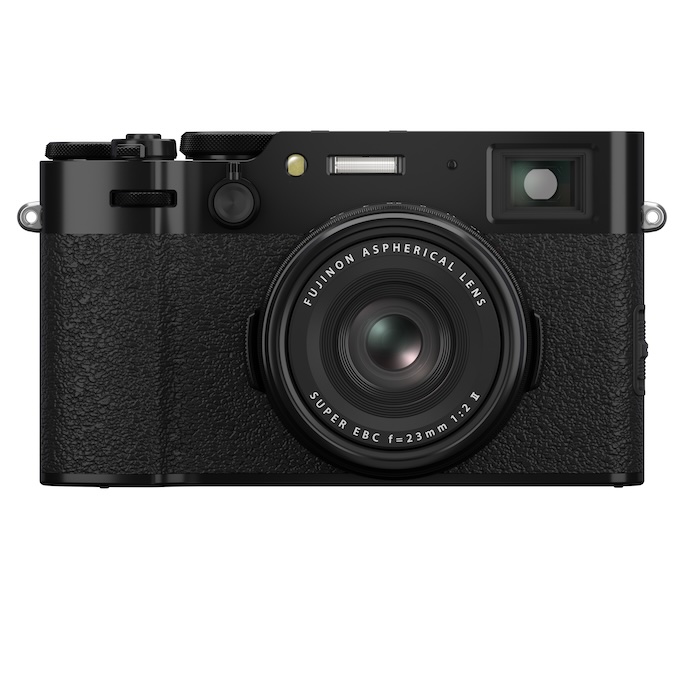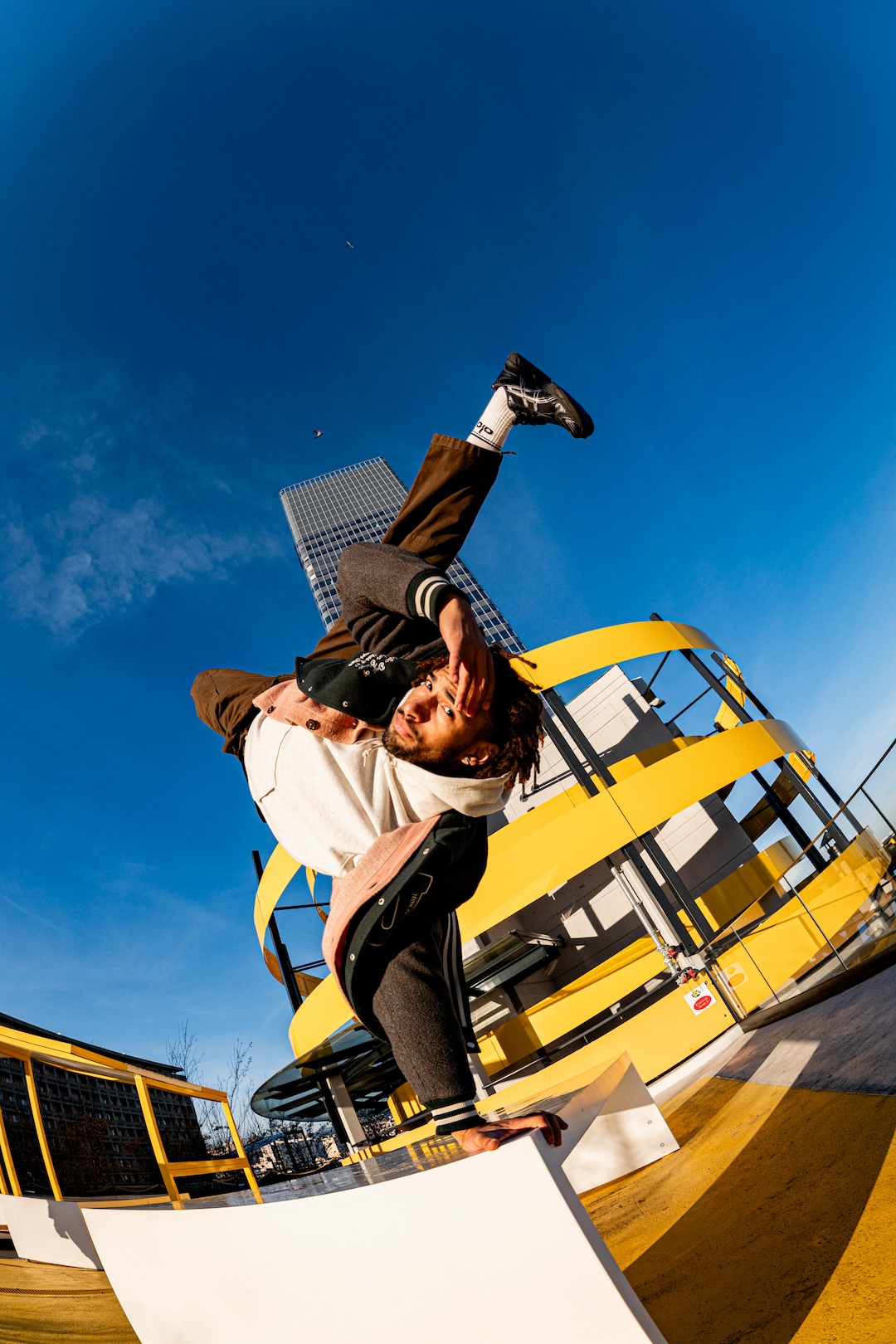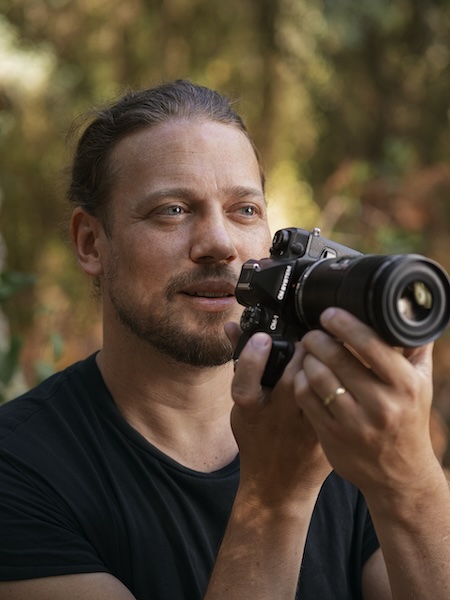The Right Lights: Our Top Photography Lighting Tools
April 14, 2014
Whether you’re just starting to build your photo studio, have already accumulated a wealth of lighting gear or are expanding your offerings by venturing into video, it may be time to take stock of today’s lighting products. To help you figure out which right lights are for you, we’ve created a roundup of some of our favorite lighting tools and gadgets from the past year.
.jpg)
Adorama Flashpoint Budget Studio Monolights
If you’re working with limited funds and want to pick up some inexpensive but quality lights for the studio or for traveling, Adorama’s Flashpoint family of Budget Studio Monolights may be the perfect solution. Available in 120-, 160- and 300-watt/second models, all three are priced under $100 and come bundled with a sync cord, AC power cord and instruction manual. You also get a one-year warranty. Each light is equipped with a 3.5mm mini jack, a modeling lamp and a built-in reflector.
An aluminum housing keeps them lightweight—averaging around 2 pounds each—and measuring between 7.75 x 7 x 4 inches (120 w/s) to 9 x 7 x 4.25 inches (300 w/s). With flash durations ranging from 1/2000th second to 1/800th second, they’re not the fastest lights on the market, but, combined with a four-stop output range, they’re more than sufficient for standard shoots. Recycle time measures between 0.5 and 2 seconds, with audio and LED alerts that indicate when they’re good to go. If your studio is in your home, no worries—a modest amp draw means no blown fuses on regular household electrical circuits.
The lights are equipped with a pre-flash test button, optical slave/master setting with LED indicator, a 5A fuse-protected circuit, replaceable flash tube and an umbrella shaft lock. And if you’re starting from scratch, you can purchase any of the monolights in kit form, with a 40-inch white/black umbrella with a removable black layer and a 6-foot, three-section light stand. And if you want to take them on the road, Adorama also offers a portable power pack, the Flashpoint Power Station. These monolights and kits are a really good deal and they ship for free in the U.S.—you can’t beat that.
Price: 120 w/s, $50/$90 (kit);160 w/s, $70/$110 (kit); 300 w/s, $100/$140 (kit); Flashpoint Power Station, $900
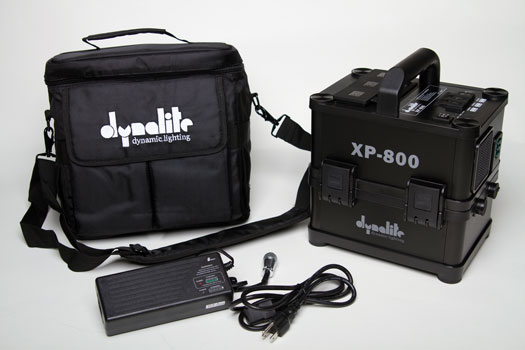
Dynalite XP-800 Pure Sine Wave Inverter
Like the best real estate, great photography is all about “location, location, location” as well. With its XP-800 Pure Sine Wave Inverter, Dynalite has added another power option for shooting in the field. Great for hooking up your studio lights while on location, the XP-800 is powered by a 12000mAh rechargeable lithium ion battery that can reach a full charge in under three hours and, with the Dynalite MP800 and 800 w/s pack, the inverter can recycle to full power in as fast as 1.4 seconds. Output power ranges from 750 to 1400w at its peak and it can operate under temperatures from 32 to 104 degrees Fahrenheit. The inverter weighs about 14 pounds (with battery) and is equipped with a trio of AC outlets. As a bonus, the XP-800 also features three USB ports, so you can easily charge your—and your clients’—mobile devices on site. Be sure to pick up a spare battery in case you need to swap it out during those long days on set.
Price: XP-800, $999; spare battery, $359
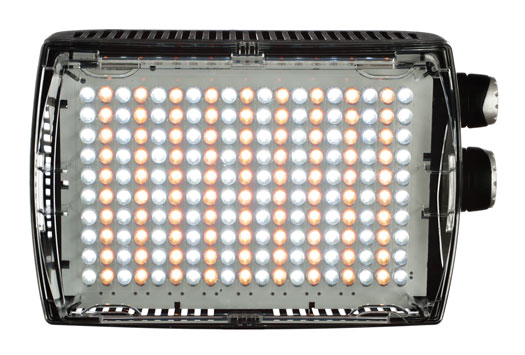
Manfrotto Spectra LED Lights
Photographers who want to take advantage of LED lighting for video and still shoots but have more basic needs (and a smaller budget) should take a look at Manfrotto’s Spectra LED lights. The Spectra lineup has five models, all of which are powered by AA batteries, are dimmable from 100 to 0 percent and can be used on-camera with the bundled ball head/hot shoe accessory. The LEDs are compatible with .25-inch threaded accessories, including Manfrotto stands and arms for off-camera use.
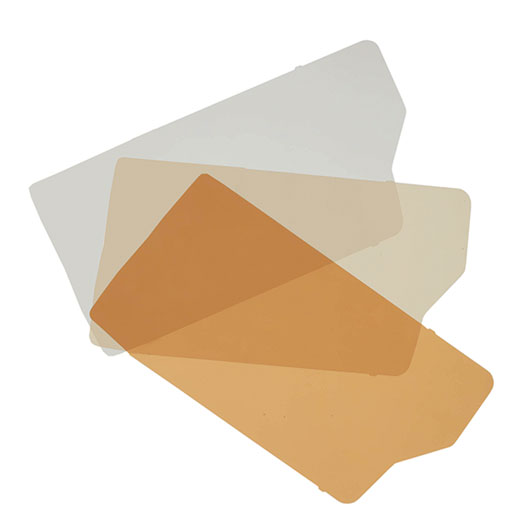
The five models include the basic 500S—which offers a fixed 5600K color temperature and a 30-inch beam angle—and the highest end 900FT with color temperature adjustment from 3200 to 5600K and a 50-inch beam angle. Other than the 900FT, which is best suited for location shooting where lighting conditions vary, the others offer fixed color temperatures at 5600K or 5000K. All come with a trio of filters (shown above)—1/4 CTO warming, full CTO warming and Opal diffusion, which can be used individually or stacked—so you can easily tweak the color balance.
The Spectra LED lights are relatively compact and lightweight, so they’re highly portable and don’t take up much space in your camera bag or on your studio shelves. Battery life averages about 1.5 hours, but if you’re near an outlet, continuous power can be provided by the optional AC adapter, which comes with an international plug set for jet-setting photographers. These LEDs are worth a look, even if you’re not currently shooting video.
Price: $189-$519
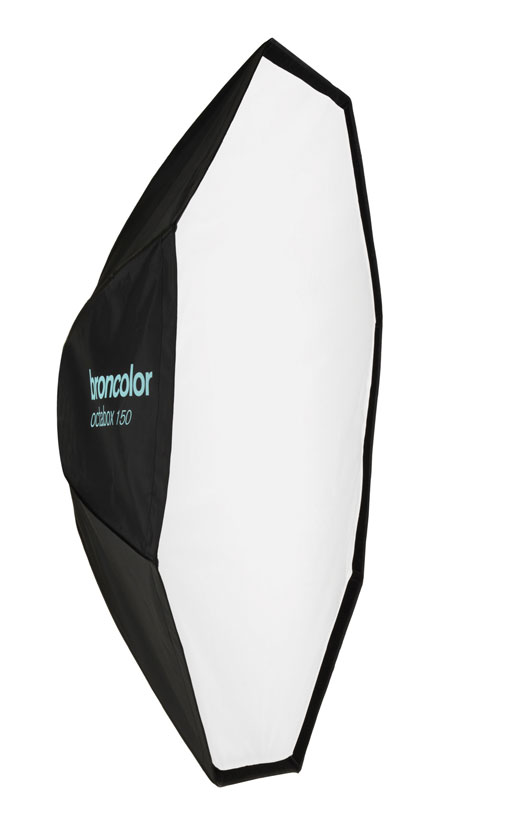
Broncolor Softboxes and Move Outdoor Kit 2
Well known for its powerful and versatile lighting products, broncolor is a great source for everything from softboxes to power packs. Last spring, the company launched a new series of nine softboxes in a variety of shapes and sizes. Each can be modified with up to three diffusers (two are included) for fine-tuning the light source, and speedrings are available for most of the current heads on the market.
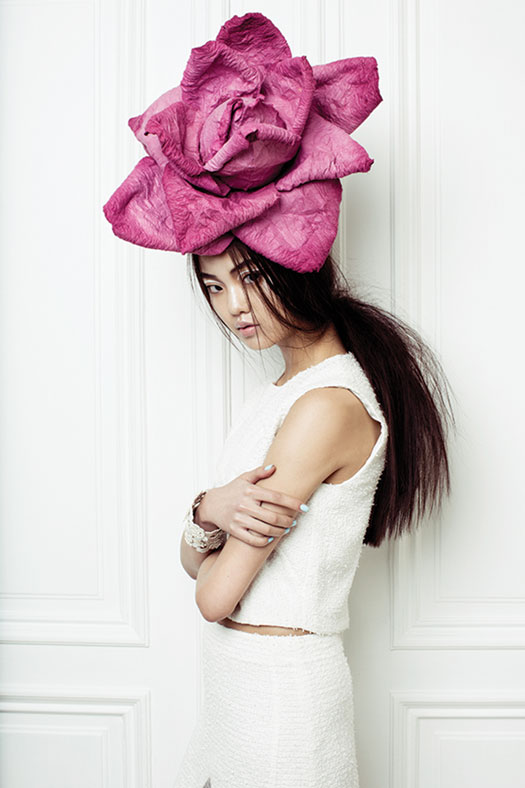
Photo © Lara Jade
Fashion and beauty photographer Lara Jade is a big fan of the bron Octa 150. She uses the Octabox paired with the Senso A4 on almost all of her studio shoots, either as a single light source or paired with a second light for fill and background. “I find that the 5-foot Octa is ideal for providing a soft but strong light source that is great for mimicking natural light in the studio,” Jade says. She also notes its versatility: “I can change the shape or contrast of the light by simply feathering the light or adding another diffusion cloth inside the octabox itself.”
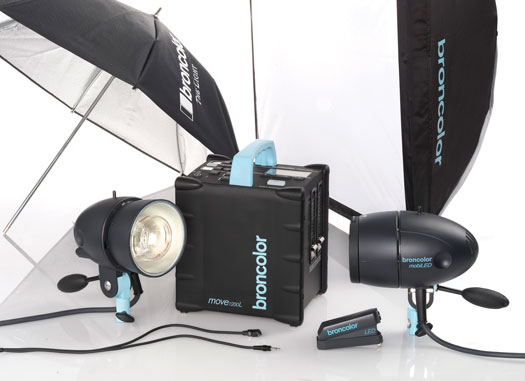
But perhaps the ultimate portable lighting product from bron is its Move Outdoor Kit 2, which our sister publication PDN tested last year with photographer Jordan Matter. Matter, whose bestselling book, Dancers Among Us, featured more than 200 dancers in everyday situations around the country, considers himself a “run-and-gun” photographer. Although part of the charm of his images is that they are completely “unplanned and spontaneous,” the process has its disadvantages. “Most notably,” he says, “I always rely on available light, which can be limiting, especially at night.”
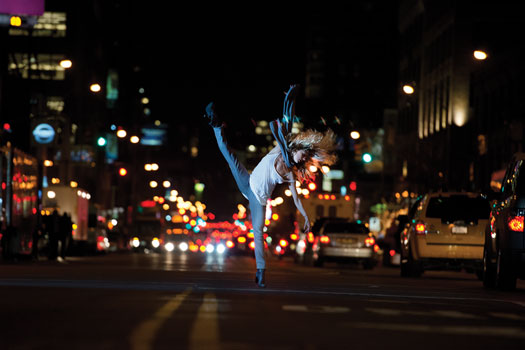
Photo © Jordan Matter
Shooting with the Move kit on the streets of New York City at night was Matter’s first time photographing dancers on location with lighting. “We wasted no time on setup so I could shoot quickly and keep my high energy,” he says. “The kit is lightweight so my assistant could move it easily as I changed the composition.” Perhaps most importantly, Matter adds, “The light was just enough to freeze the action without looking artificial. I’ve never been able to get sharp jumps and leg kicks at night until this shoot.”
If you shoot on location, the bron Move kit is ideal. Available in different configurations, Matter used the Move Outdoor Kit 2, which consists of the Move 1200L power pack, two MobiLED lamps, one softbox, one umbrella, one RFS 2 transmitter set, one MobiLED continuous light adapter, a waterproof power pack soft case and an outdoor trolley backpack.
Price: Octa 150, $362 (other softboxes from $214); Move Outdoor Kit 2, $7,195
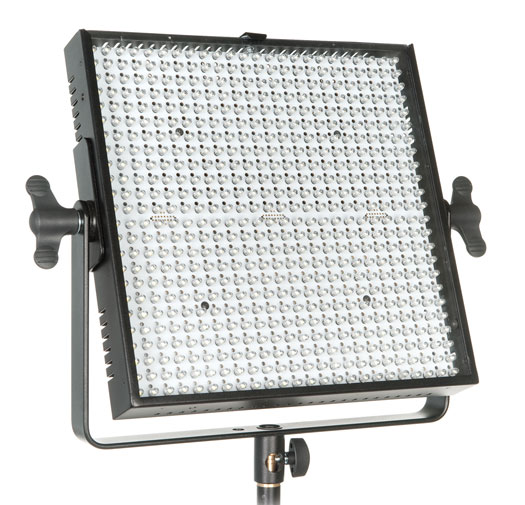
Limelite Mosaic Bi-Color LED Panel
Check out videographer and visual storyteller Eduardo Angel’s sidebar accompanying this article (below) and you’ll notice that one of his tips for shooting video is to use adjustable temperature LEDs such as the Limelite Bi-Color LEDs. In fact, Angel says, “Right now, I’m shooting almost everything with Limelite’s Mosaic Bi-Color LED panels.” Citing some of Limelite’s main attributes, Angel points out that the panels are “extremely portable, dimmable from 100 to 0 percent, can be easily adjusted from 2800K to 5600K and work with Anton/Bauer batteries.” While those may be the main benefits for Angel, other features add to the panel’s appeal. For example, the light bank consists of 576 power LEDs that provide from 2400 to 5200 Lux of light.
The Limelite Mosaics use a standard V-lock battery but are available with an optional Anton/Bauer battery and are equipped with an onboard digital control panel with full DMX in and out, so the lights can be operated remotely. Because the Limelite Mosaics are modular, you can add an optional mounting kit to create two- and four-panel light banks as well, and, with standard RJ45 Ethernet cables, control them from a single panel. While the panel’s features are ideal for video capture, like other LEDs, it can easily be used to light still photo shoots as well. But unlike most LEDs, the Mosaics offer a special mode that displays the light output in f/stops on the control panel, so you’re good to go regardless of how you’re using these ultra-versatile lights. More detailed specs are available on the Limelite website.
Price: $1,119 (with V-mount or Anton/Bauer battery plate)
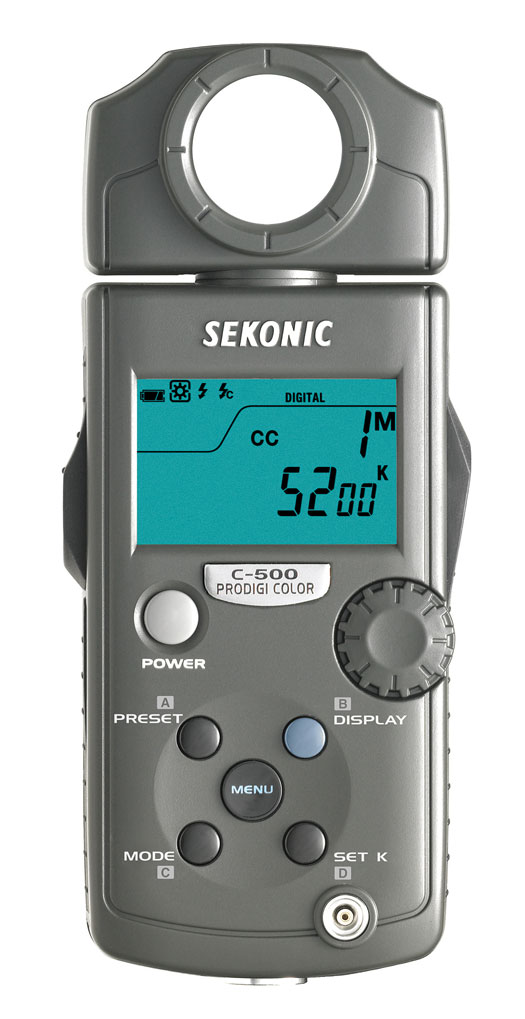
Sekonic Meters
Since handheld meters seem to have been replaced by DSLR in-camera metering, many photographers may be using their light meters (if they ever had them) as paperweights these days. In still photography—especially with a single type of light source—you can generally do okay without a handheld meter. However, if you’re shooting video, you need to rethink your approach, according to videographer Eduardo Angel. Sure, if you’re doing a single scene and don’t have to repeat the lighting (exposure or color balance), then, he says, “You should be able to do it by eye.” But if you want consistency across shoots, you’ll have to meter—particularly for color. Angel’s constant companion for just this purpose is the Sekonic C-500 color meter (he also uses the Sekonic L-308DC and sometimes the Sekonic 478D, but the C-500 is his most essential meter). He generally shoots with two to three cameras from different angles and says that setting the white balance for all of them is key, particularly when shooting under multiple light sources.
The C-500 ProDigi Color meter is designed specifically for digital photography (although it works for film photography, too). It’s compact but sophisticated, with readings displayed for brightness (LUX or foot-candle), color temperature and LB/CC indices to simplify filter selection. You can simultaneously measure the color of flash and ambient lights, and the meter is programmed with 19 presets for color compensation adjustments. You can quickly set a target color temperature in Kelvin. It’s compact, lightweight and runs on AA batteries. There are plenty of detailed specs on the Sekonic site, so visit them for additional information. There’s even a model, the C-500R, that has built-in wireless triggering capabilities.
Price: $1,216
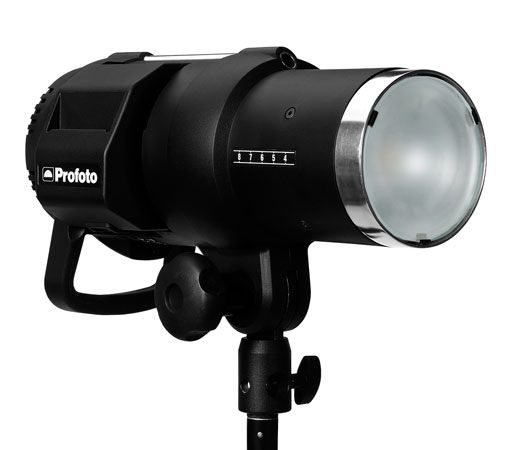
Profoto B1 Off-Camera Flash and Deep L Umbrella
Perhaps one of the hottest lighting products on the market today is the Profoto B1 off-camera flash, although the “off-camera flash” designation is a little misleading. It’s not a speedlight, nor is it a monolight; rather, it’s sort of a mashup of the two. The battery-powered, cordless B1 is highly portable. It weighs 6.6 pounds and measures 12.2 x 8.3 inches with a diameter of 5.5 inches and, from the short time I had with the flash, feels solidly made. This 500 w/s device can shoot up to 20 flashes per second and shoots in 1/10 or full f-stops. At full power, the battery will last for up to 220 flashes. The B1 is equipped with a modeling light, and with the optional Air Remote, turns into a full TTL device. The optional Air Remote, which attaches to the camera’s hot shoe, is currently only available for Canon (TTL-C), but a Nikon version (TTL-N) is in development and should be released sometime this year.
-4.jpg)
Photo © Michael Mueller
I’ve only seen the B1 in action once, but Rangefinder/PDN senior technology editor Dan Havlik and photographer David DuPuy have already tested the light. Meanwhile, DuPuy gave us some feedback about his experience with the B1, saying that this new light “seems to be a template for the future of flash photography.” Not only is it extremely portable, but the B1 is “easy to work with, feels solidly built and,” he adds, “makes a good impression with clients. Mine asked a number of questions, which helped create a good energy for the shoot.” DuPuy says the B1 is “reliable, consistent and enables a greater level of creative freedom and risk-taking during the shoot. I think if you take the B1 out on assignment, you may be surprised where you end up!”
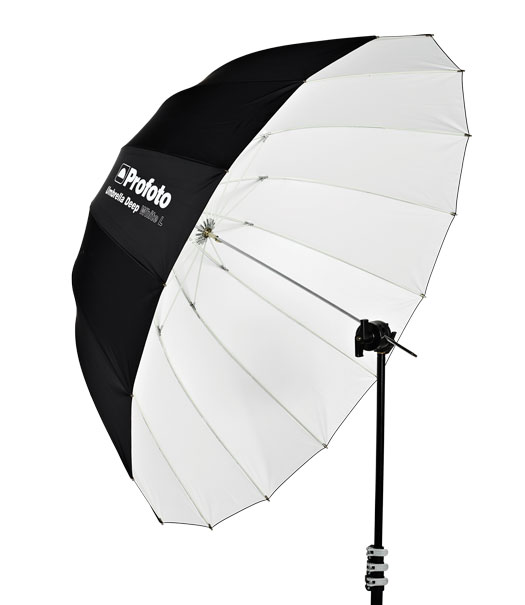
The B1 is also compatible with all of Profoto’s light-shaping tools, including the company’s relatively new set of umbrellas. While Swedish photographer Klara G didn’t test the B1, she’s a huge fan of umbrellas in general to create her signature style images and has been working with Profoto’s Deep L umbrellas more recently. Klara G explains, “I love to be able to work fast, and on set there is rarely a lot of time to spend, so I don’t want to take time away from working with my model. With umbrellas, I can put up a really simple yet beautiful light in minutes.” She points out, “They are also easy to bring to any shoot, easy to store and inexpensive compared to other equipment and accessories.”
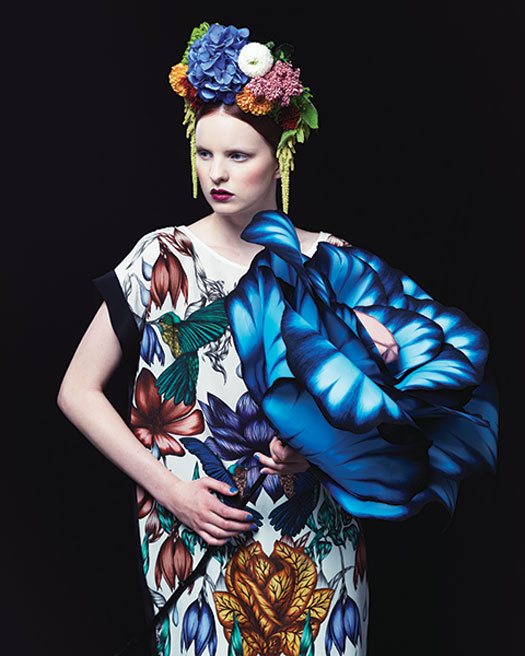
Photo © Klara G
But the main reason she loves umbrellas is that “they give you natural and elegant light.” With the Profoto Deep L, Klara G explains, “Since it’s deeper than other umbrellas, the light is captured in an embracing way and bounces in a more concentrated way. It makes your subject even more mystical and interesting.” The depth of the umbrella also provides greater control over how the light is shaped.
The Deep L is available in large (51-inch diameter) and extra-large (65-inch diameter) sizes. Silver, white and translucent options allows photographers to choose the most appropriate material for his or her shooting style. Profoto also offers optional diffusers to further customize the Deep L’s lighting capabilities. And, as a bonus, the B1 can be used with all 120 of Profoto’s light-shaping tools, including the Deep L, so be sure to check out the Profoto site for the full list of accessories.
Price: B1, $1,995; Deep L umbrellas, $249 (large), $349 (XL)
Lighting Design Tips for Video Productions
By Eduardo Angel
You can make a film without sound, without color and without a single camera movement, but you could never make a film without light. Here are a few tips to help you improve your video lighting skills and deliver a higher production value to your clients.
1. Use continuous light, not natural light
Video often requires shooting over extended periods of time in which you have to tear down and reproduce scenes days or weeks apart. Using continuous light—and a light meter—allows you to replicate the same lighting for each shoot. Try to minimize the impact of uncontrollable natural light by blocking the light, e.g., covering windows. In short, try to minimize the unknowns—those things you cannot control.
2. Find the balance
Knowing the color temperature of a scene is key for video, so always have a colorimeter handy. Like matching the exposure, color temperature is critical for replicating shooting conditions. Additionally, without color temperature continuity, post-production is more time-consuming and expensive.
3. Use adjustable LEDs to balance mixed lighting
Continuous light fixtures, like the Limelite Mosaic Bi-Color LED Panels with adjustable Kelvin temperatures, are ideal for balancing mixed lighting, almost eliminating the need to gel the lights. They can also be battery operated, so they are a great complement for outdoor shooting.
4. Harness and control sunlight when shooting outdoors/diffuse sunlight
Place diffusion material between the sun and the subject when shooting outdoors to prevent harsh highlights, and use a reflector to eliminate shadows, just as you would in still photography.
5. Control lighting direction with barn doors
This is especially important with LEDs, which tend to spill the light. By using barn doors (or create your own with cardboard and gaffer’s tape), you can direct the light and, ultimately, the viewer’s eye, which automatically goes to what is highlighted.
For information on these topics and more, be sure to check out Eduardo Angel’s new course on Lynda.com, “Lighting Design for Video Productions,” follow him on Twitter and visit his website.

